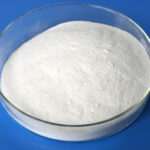Project Description
Sodium Hexametaphosphate
 Synonyms: Sodium tetrapolyphosphate; Sodium polymetaphosphate; Sodium Polyphosphate; Sodium metaphosphate; SHMP
Synonyms: Sodium tetrapolyphosphate; Sodium polymetaphosphate; Sodium Polyphosphate; Sodium metaphosphate; SHMP
Molecular formula: (NaPO3)6
Molecular weight: 611.17
CAS Number: 10124-56-8
INS No.: E452(i)
Einecs Number: 272-808-3
Properties: It is a white powder. Soluble in water, insoluble in organic solvents.
Specification :
| Item | Food Grade |
|---|---|
| Total phosphate (P2O5) | ≥68.0% |
| Insoluble matter in water | ≤0.05% |
| Unactive phosphate (P2O5) | ≤7.5% |
| F | ≤0.001% |
| Fe | ≤0.009% |
| Pb | ≤0.0001% |
| As | ≤0.0001% |
| Cd | ≤0.0001% |
| Hg | ≤0.0001% |
| Heavy metals, as Pb | ≤0.001% |
| PH value of 1% solution | ≤6.5 |
| Loss on ignition | ≤1.0% |
Application:
Sodium hexametaphosphate (SHMP) has various applications across various industries.
1. In food processing:
Sodium hexametaphosphate (SHMP) is a food additive with several applications in food processing.
- Water binding and moisture retention: SHMP is often added to processed meats, seafood, and poultry products to improve their water-holding capacity. This helps to enhance the juiciness, tenderness, and overall texture of these products, preventing them from drying out during cooking or processing.
- Texture improvement: SHMP can be used to modify the texture of processed meats, giving them a more succulent and pleasing mouthfeel. It helps to prevent the products from becoming tough or dry, resulting in a more enjoyable eating experience.
- Emulsification and stabilization: SHMP has emulsifying properties and can stabilize emulsions in various food products. It helps to prevent phase separation and maintain a uniform consistency in products such as salad dressings, sauces, and processed cheese.
- pH control: SHMP acts as a pH regulator and can control the acidity or alkalinity in certain food products. It helps to maintain the desired pH level, which is important for proper food preservation, texture, and taste.
- Mineral sequestration: SHMP can bind to minerals, such as calcium and magnesium, interfering with certain food processes. By sequestering these minerals, SHMP helps to prevent unwanted reactions, such as the formation of unwanted precipitates or the degradation of food components.
2. Water treatment: Sodium hexametaphosphate (SHMP) is commonly used as a sequestering agent in water treatment processes. It helps to prevent the formation of scale, deposits, and sediment caused by hard water minerals. By binding to these minerals, SHMP helps to maintain the efficiency and effectiveness of water treatment processes.
3. Industrial cleaning: Sodium hexametaphosphate (SHMP) is used as a cleaning agent in various industrial applications. It removes dirt, scale, rust, and other contaminants from surfaces and equipment due to its ability to soften water, enhance cleaning performance, and prevent the deposition of dirt and stains on fabrics and surfaces. SHMP’s ability to bind to minerals makes it useful in cleaning processes by preventing scale formation and deposits.
4. Ceramic industry: Sodium hexametaphosphate (SHMP) is used as a dispersant in the ceramic industry. It helps to improve the workability of ceramic slurries, control the rheological properties of ceramic materials, and enhance the firing properties of ceramic products.
5. Metal treatment: Sodium hexametaphosphate (SHMP) is used in metal treatment processes, such as metal surface cleaning and preparation, plating, and finishing. It helps to dissolve and remove rust, scale, and other contaminants from metal surfaces.
For more details, please visit What is Sodium Hexametaphosphate used for?
Packing: In PP+PE bags of 25kgs net each, we can provide packages according to the customer’s requirement.
Storage: Store at a cool, dry, and well-ventilated place.
Shelf life: 24 months.

